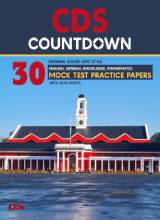The Flying mechanism : Every Flying Branch Aspirant Must Know
How are you warriors? The written examination result of CDS is out and I hope that most of you have made it for the SSB. Every Air force aspirant has the dream to serve the mother nation flying high in the air. Whether it is any any type of peaceful operation or at the time of war, the the flying branch has a very vital role to play.
Coming to the preparation, you must have knowledge about the Indian air force aircrafts and related things, especially from the interview point of view. One such most important part is the flying of an aircraft, its principles and working.
So let's have a look at how an aircraft flies
The working of modern aircrafts is on the same principal as that of the first successful flight by Wright brothers. And that is the airfoil technology. To understand well, let us take the example of a simple plane.
The curved shape of the wings of the plane allows the wings to throw down the air downwards. As a result the plane is lifted upwards (Newton's third law of motion).
For the forward movement, modern planes use a powerful turbofan engine. The turbofan engine passes the air through it and converts it into a high velocity stream which creates a thrust and consequently the plane moves forward.
Looking at the wings, it consist of three parts
Flap
Slat
Aileron
During the take off the flaps and slats are extended downwards so that the curvature increases and the air is deflected more and the plane is lifted upwards.
Now for the navigation of the aircraft, there comes the role of three different parts
Ailerons
Elevator
Rudder
For moving the aircraft down, you just need to lower the elevator. This deflects the air downwards which rises up the back part of the aircraft and the front part now points downwards.
In the same way, for changing the path of the plane to right or left, the rudder is turned to the same direction. But this way, there is a lot of discomfort for the passengers.
So here comes the use of ailerons. The position of the ailerons are moved in opposite direction so that there is some rolling. This causes the plane to change its path without changing it's orientation.
I hope this is going to help you. All the best for your preparations.






 Order Now on Amazon
Order Now on Amazon
